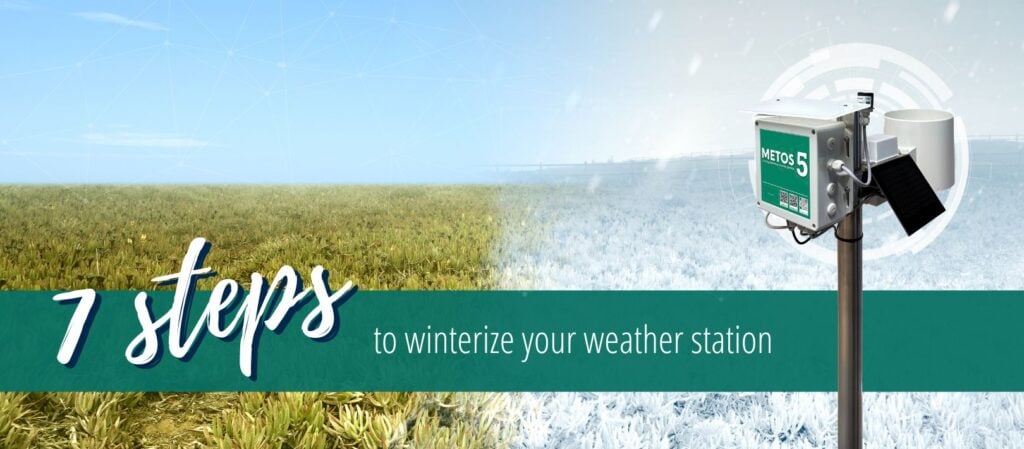7 Steps to Prepare Your Weather Station for Winter
Keep your METOS devices in peak condition and start 2026 ready to go
This year’s growing season may be slowing down, but your farm never truly rests. Just like machinery needs proper care before winter storage, your weather station and sensors also need attention. Neglecting them over winter can lead to power failures, data gaps, or costly repairs in spring. By preparing now, you’re not just protecting your investment. You’re also setting yourself up for a stress-free start to the 2026 season.

Reliable weather data is the foundation of smart decisions, from planting to pest control, and your devices should be ready the moment you need them. Here are 7 essential steps to close the season with confidence:
1. Adjust Data Transmission Settings
Winter brings shorter days and less solar charging. To conserve battery power:
- Set your station to the default 1-hour data transfer interval (avoid settings more frequent than once per hour).
- Disabling frost alerts or unnecessary notifications during the off-season.
2. Remove and Store Soil Moisture Sensors
If you haven’t already, carefully remove soil moisture sensors after your final irrigation.
- Never pull by the wires! Dig them out gently.
- Clean and dry before storing.
- Keep them in a clean, dry place to prevent corrosion or damage.
3. Bring iSCOUT & CropVIEW Devices Indoors
Insect traps and cameras need winter care too.
- Disconnect solar panels and batteries.
- Clean the lenses and covers (use a lint-free cloth).
- Store in a dry, sheltered place.
- Update firmware via USB or contact METOS support if needed.
4. Clean Sensors and Solar Panels
Accuracy depends on cleanliness.
- Remove leaves, insects, or debris from the rain gauge.
- Check that the mechanism moves freely.
- Wipe solar panels and sensor surfaces for maximum efficiency.
5. Review Frost Monitoring Settings
If frost monitoring is not needed during winter, switch it off in FieldClimate to save battery life.
Tip: Enable frost mode again before early spring nights, when frost risk returns.
6. Schedule Repairs and Calibration
Don’t wait until the first week of planting.
- Check if any sensors need repair or calibration.
- If you’re in Europe, send devices for service before December 2025 ends to guarantee timely return for 2026.
7. Document Your Setup
Future you will thank you.
- Note where each sensor was installed.
- Save station IDs and configuration settings.
- Take a few photos of your setup for easy re-installation next season.
FINAL THOUGHTS
You can’t control the weather, but you can control how prepared you are for it. A few hours of care now saves days of frustration later, ensuring your METOS weather stations and sensors deliver dependable data right from the first day of the new season. By winterizing properly, you’ll avoid unnecessary repairs, protect your investment, and step into 2026 with tools you can trust.
If you’re unsure about any step, from calibration to spare parts, our team is here to help. Let’s make sure your METOS devices are not just stored, but truly ready for action when spring returns.
FAQ
